Copenhagen Fashion Week Designers Know What Women Want
The Danish capital thrives on a ladies-first mentality. It's time other markets paid attention.
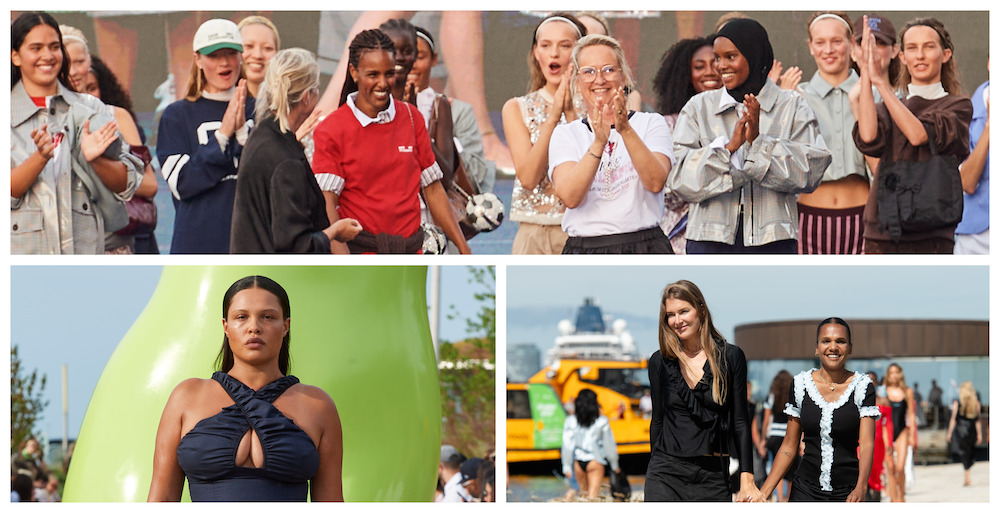
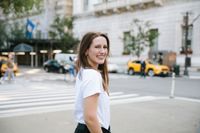
If you want to understand what makes Copenhagen Fashion Week special relative to every other style capital, you can’t look only at the trends forming on the runways or the front row outfits topped with the city's signature rosette hair clips and cloud-sized scrunchies. You also need to watch—and count—the designers taking their final bow afterward.
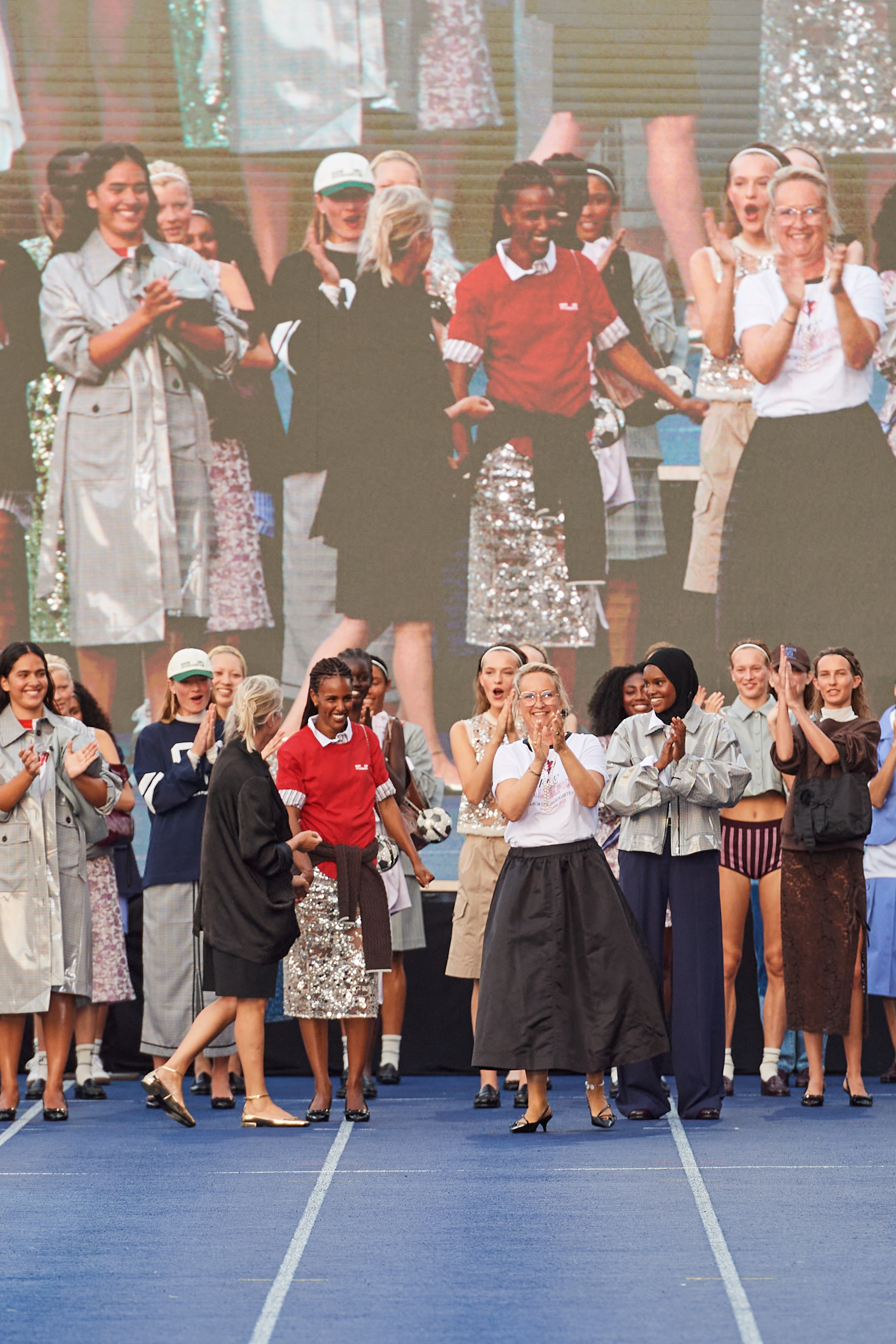
Co-founders Rikke Baumgarten and Helle Hestehave (front row) take their final bow at their "Office Olympics" Copenhagen Fashion Week show with their cast.
Copenhagen’s Spring 2025 season was bookended by labels whose designs are made by and for women. Friends and ÓperaSport co-founders Stephanie Gundelach and Awa Malina Stelter opened the week with ruched-all-over midi dresses and bow-laden mini bags. Jeanette Madsen and Thora Valdimars, lead designers at Rotate, wrapped up the calendar in a whirlwind of semi-sheer, butter-yellow party dresses and daytime suits. Every day of the proceedings in between was filled with collections similarly sketched and dreamed up by creatives who reflected the front row and the models cast on the runway.
Women designing for women shouldn’t be novel in the year 2024. Yet in the United States, lists of women-led brands to shop are common because there are so few brands that we need extra guideposts to find them. Meanwhile, there’s an abundance in Copenhagen. Of all the most closely followed international fashion weeks, Copenhagen leads in terms of gender parity: 63 percent of brands on the calendar have women in the top creative director roles. In many cases, they’re also working double duty as the founder and CEO.
Here, a woman-first point-of-view isn’t trotted out for marketing. It’s embedded into all the collections through a mix of “I would actually wear this” ease, regardless of aesthetic, and a vision of style that’s far more inclusive than the one-size-fits-just-us positioning in many other cities. Whether I was observing stately minimalist separates with some Mrs. Prada influence at Mark Kenly Domino Tan, accordion-pleated 3-D knits at A.Roege Hove, or windswept chiffon tube dresses at The Garment, I heard approving whispers from editors around me to the tune of “I want that.” The designers know their audiences, because they’re part of them.
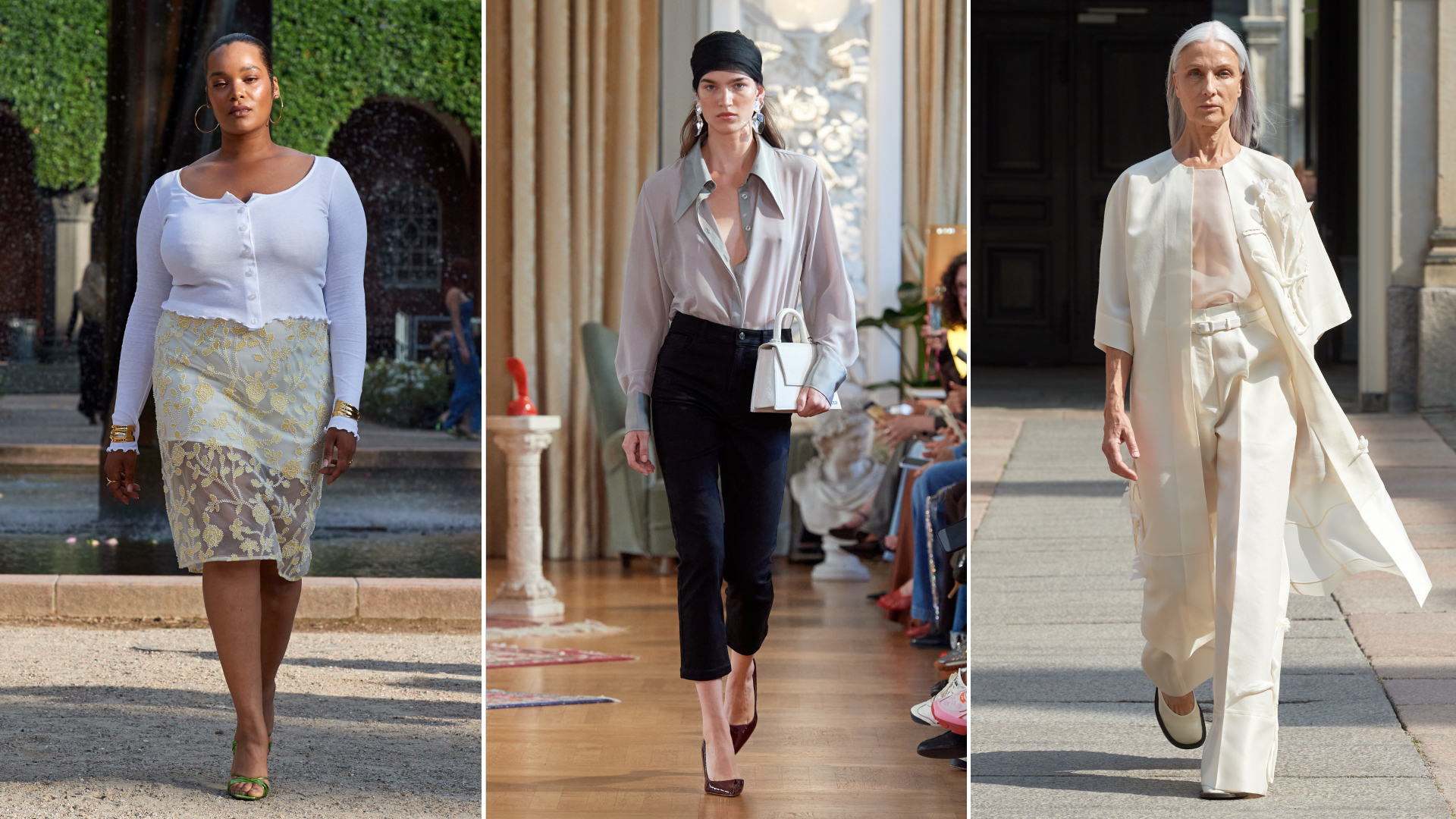
Copenhagen Fashion Week's collections often take dominant trends—in this case, sheer dressing at Rotate, Gestuz, and Mark Kenly Domino Tan—and styles them in ways with off-runway viability.
The styling, too, wasn’t overwrought or impossible to imagine in a non-runway context. Sanne Sehested of Gestuz tends to favor fringe jackets and moody, tie-dye-esque prints fit for rock-and-rollers like Stevie Knicks or Joan Jett. Skall Studio reliably releases creamy trench coats and loose shirt dresses under sisters Marie and Julie Skall. These and others could still be broken down into pieces for the audience to take away at every size.
Every show I attended included more than one model in middle age or older; mid-size and curvy bodies on the runways weren't occasional stunt-casting but a consistent presence. Sinéad O’Dwyer, a newcomer to the calendar, dressed an almost exclusively curvy cast in her subversive cut-out and figure-hugging separates; she also welcomed Copenhagen’s first blind model (and her guide dog) in the show while also offering look descriptions for visually impaired audience members. This casting was like a mirror up to the audience and to the crowds just outside the shows.
Trends, like sheer fabrics or hot pants, were also positioned in more wearable ways. When micro shorts are paired with a relaxed, oversized shirt or a see-through top that comes with a blazer and a pair of jeans, it doesn’t feel like the male gaze got involved. I could actually imagine myself skipping a skirt or controversially layering a dress over a pair of jeans because someone with my body type (and myriad others) was doing it—and with pieces that weren't too advanced to imagine in a real-life closet. It all struck me as a nuanced encapsulation of modern womanhood, the utopian energy of Greta Gerwig’s Barbieland, minus all the pink.
Get exclusive access to fashion and beauty trends, hot-off-the-press celebrity news, and more.

Copenhagen Fashion Week is also one of the most consistently inclusive in terms of runway casting—another sign of the women working behind the scenes' influence. Models represented a range of body types, races, ages, and styles at Sinéad O'Dwyer, Baum und Pferdgarten, and A. Roege Hove.
This isn’t to say that Copenhagen Fashion Week’s women designers are thinking in a gender binary. Sophie Bille Brahe, one of the city’s most well-known jewelers who presents on the official calendar, says her graduated diamond rings and bow-shaped earrings made of dainty pearls are for everyone. “It is one of my dearest dreams that all men would wear diamond rings!” she says.
Nevertheless, designers here get their shoppers in a way that some other places tend to overlook. Stephanie Gundelach, co-founder of ÓperaSport, says speaking to how women dress comes from a lived understanding. “We love working with seamless recycled silk because it hugs the woman's body no matter the age or shape.” Both she and co-founder Awa Malina Stelter are moms of two children.“That’s why the practical and comfortable elements play a huge part when we’re designing, but we still strive to add that touch of elegance. It’s vital we have a balance.”
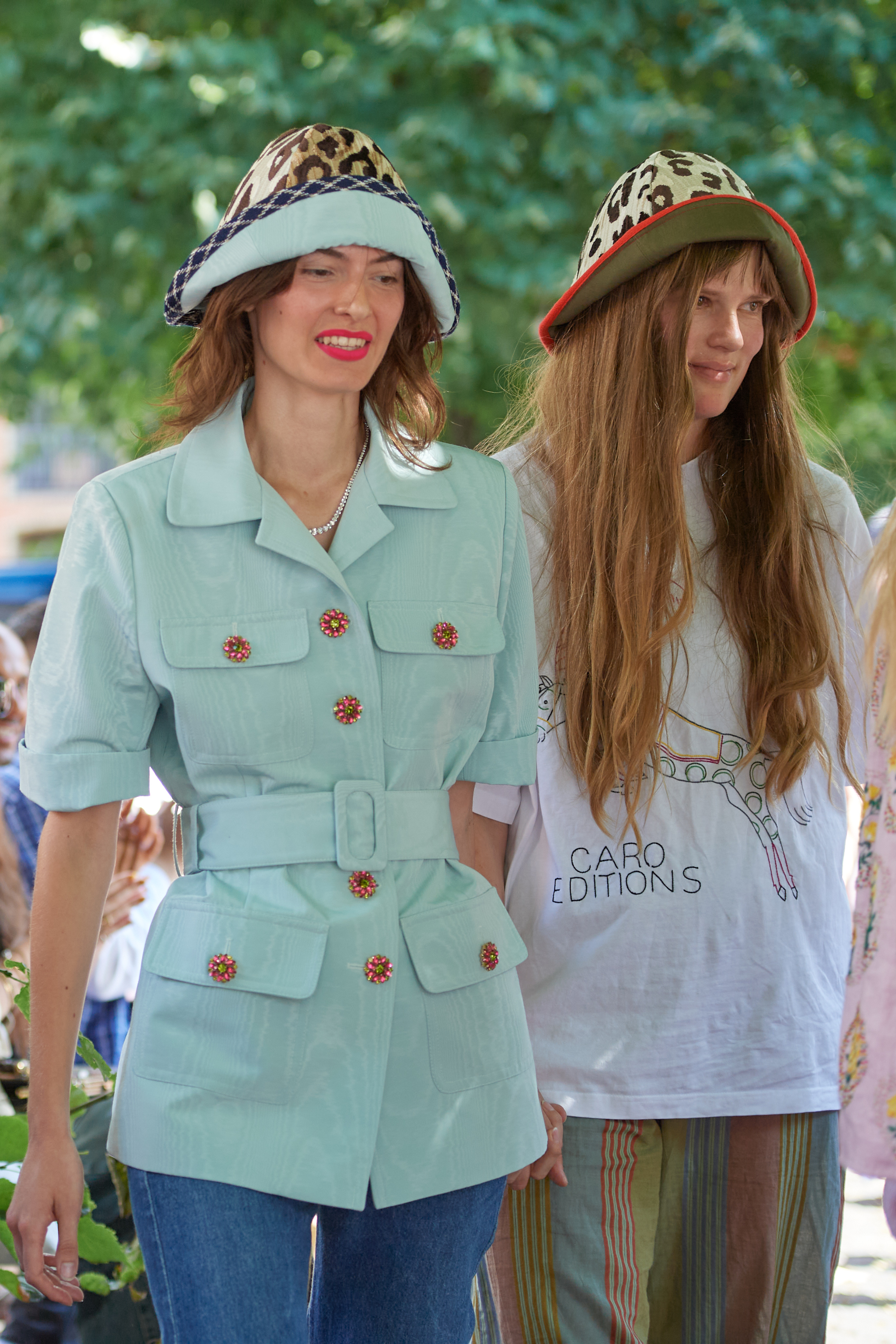
Caro Editions founder Caroline Bille Brahe (right) takes her final walk with one of the models from her first runway show, a standout of the season.
Barbara Potts and Cathrine Saks of Saks Potts, who shared a pared-back collection of polos, faux fur jackets, and day dresses for their tenth anniversary, say they think about their brand as a personal story. “We don't design only with the idea that ‘we have to empower women’—we just decide what we want to wear ourselves,” Saks says. As they’re thinking about what they want to wear as young parents or what their friends are looking for, perspective matters. “It's never because of the guys—that's also never been a discussion.” The same is true for brands from the vintage-leaning Caro Editions to the whimsical Baum und Pferdgarten—where the internal teams beneath the founders also happen to be majority women.
From the outset, designers like Saks are encouraged to think for themselves in a way that creators in other cities might not be. Denmark is one of the highest-rated countries on the European Institute for Gender Equality’s annual index; while there’s still a slight gender wage gap, laws supporting maternity and paternity leave are leaps and bounds ahead of the US’s, allowing women to keep designing through parenthood. “In many ways, we are pretty far ahead here in Denmark when it comes to women’s rights. It is fairly uncomplicated to start a company here, and our educational system definitely contributes to this,” says Rikke Baumgarten, co-founder of Baum und Pferdgarten. “In general, our work lives are very balanced and makes it easy for women in terms of maternity leave, et cetera.”

Copenhagen Fashion Week street style reflects the women its designers have in mind on the runway: in various stages of life and with different approaches to personal style.
Copenhagen Fashion Week's designers still have their brushes with a global system that's stacked against equality. Barbara Potts tells me that starting her brand with Saks at the ripe age of 18 meant there were times when “an older man in a suit” could have helped them to be taken more seriously by investors or retail partners. But she says the duo is “tough”—and the strength of their friendship powered them through to their tenth anniversary, a place where they’re now able to mentor designers.
When there are hardships, brands stick together. In this season's opening remarks, Copenhagen Fashion Week CEO Thorsmark noted that times are tough in retail worldwide—but here, it’s not a reason to be defeatist. Instead, designers have taken the environment’s headwinds as a sign to be more supportive of one another. Ganni, arguably the biggest brand out of Copenhagen, stopped showing last season to dedicate time (and funds) toward investing in the next generation. For Fall 2024, they sponsored an exhibition highlighting designers who experiment with lower-impact textiles. For Spring 2025, they tapped four new labels to co-design a collaborative sneaker with New Balance—once a Ganni-only project, now exposing fresh names to a global audience.

ÓperaSport co-founders Stephanie Gundelach and Awa Malina Stelter opened the Copenhagen Fashion Week calendar this season, setting the tone for a wearable, women-first season.
Camaraderie wins out over competition, even on a small scale. “I can’t really answer that on behalf of the whole industry; I can only talk about my own experience, which is that I have been supported all the way along,” says Caroline Bille Brahe, who hosted her first runway presentation for Caro Editions this season. “It was a really big step for our young brand, and so many people helped and believed in me. For instance, people I worked with in my modeling career backed me in the show, from casting models to doing the hair.”
Here, support is valued as much as commercial success or a strong runway review. Looking good and feeling good aren’t limited to one profile by one brand because the women designing these collections are themselves diverse and propped up by an enthusiastic network. When I ask ÓperaSport’s founders how they want to see their latest collection show up in the world, their answer is broad but refreshingly simple: “Our goal is to see women of all shapes, age groups, and sizes wear it off the runway,” Awa Malina Stelter tells me.
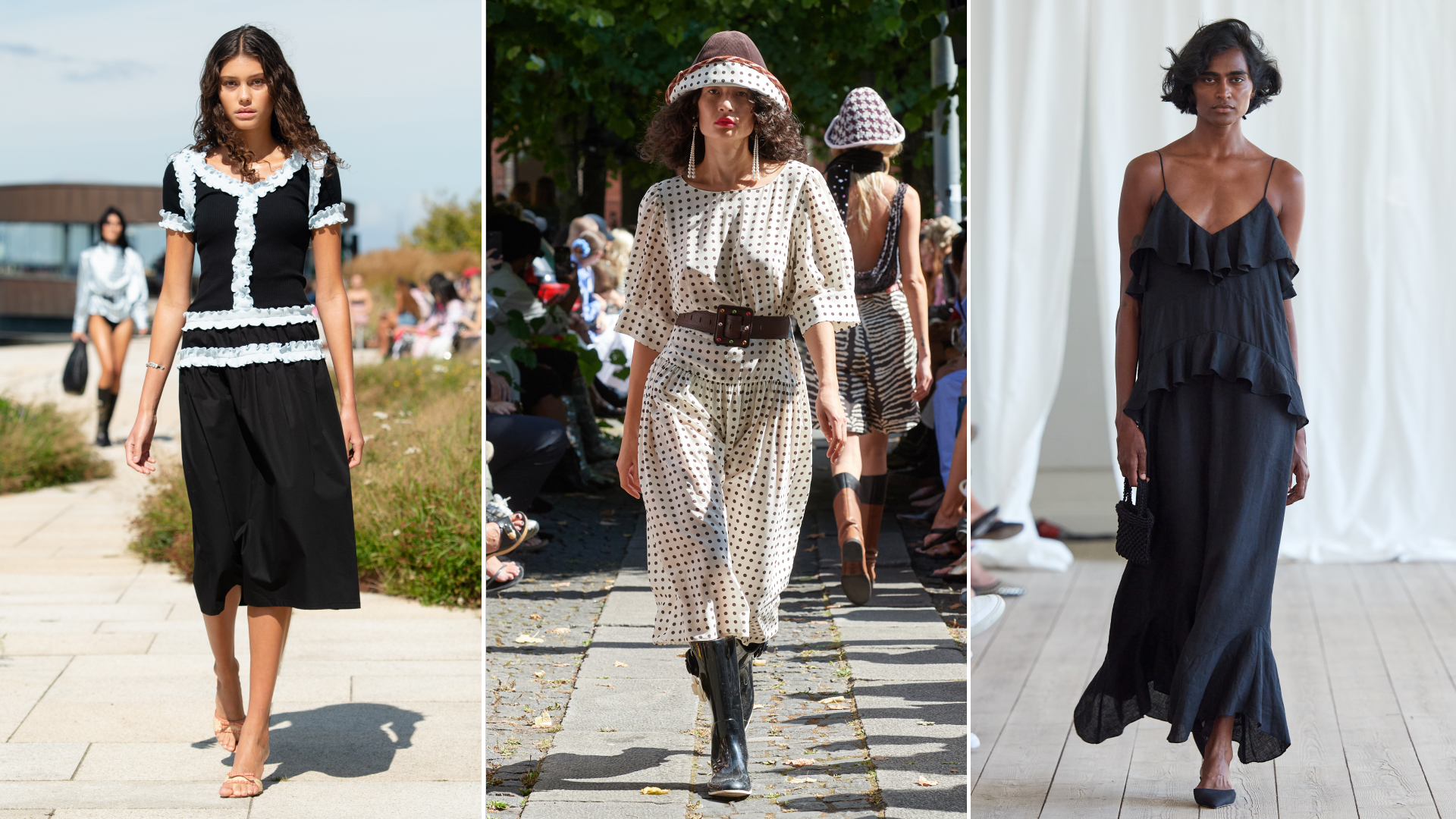
Copenhagen Fashion Week's Spring/Summer 2025 collections also convey an overwhelming sense of ease, in relaxed dresses and shape-enhancing ruching seen at ÓperaSport, Caro Editions, and Skall Studio.
Those real-life moments have a habit from starting within Copenhagen’s small-but-influential fashion circle. A decade ago, Caroline Bille Brahe was one of the first models to wear a Saks Potts coat. This August, she wrapped her debut runway show by walking arm-and-arm down her runway with one of the models. Cathrine Saks and Barbara Potts of Saks Potts cheered and clapped from the front row so enthusiastically, you’d think they had sewn each shirt themselves. Really, it’s just the spirit of the week. “We help each other,” Potts tells me. “It's much more inclusive in that way.”
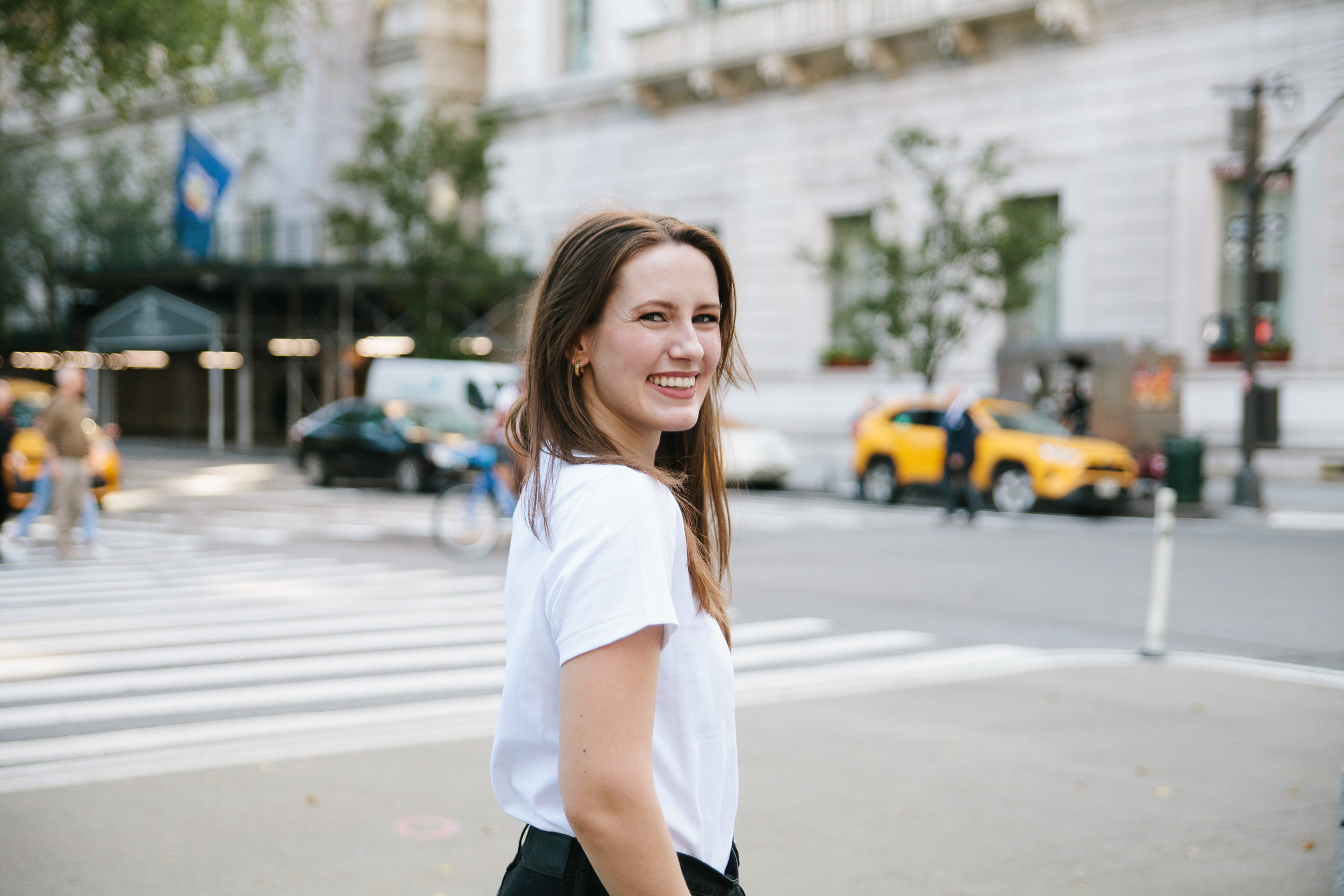
Halie LeSavage is the senior fashion and beauty news editor at Marie Claire. She is an expert on runway trends, celebrity style, and emerging brands. In 8+ years as a journalist, Halie’s reporting has ranged from profiles on insiders like celebrity stylist Molly Dickson to breaking brand collaboration news. She covers events like the Met Gala every year, and gets exclusive insight into red carpet looks through her column, The Close-Up.
Previously, Halie reported at Glamour, Morning Brew, and Harper’s Bazaar. She has been cited as a fashion and beauty expert in The Cut, CNN Underscored, and Reuters. In 2022, she earned the Hearst Spotlight Award for excellence and innovation in fashion journalism. She holds a bachelor’s degree in English from Harvard College.